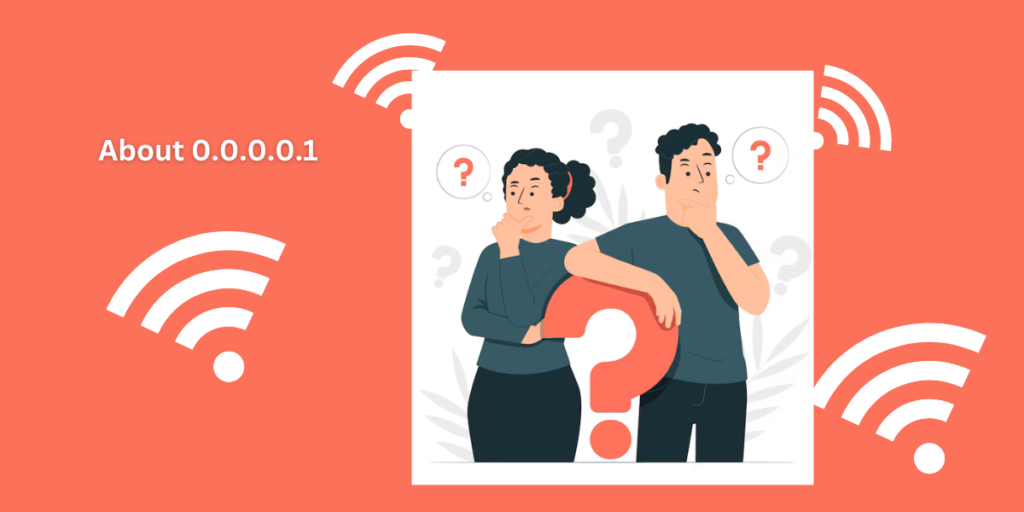About 0.0.0.0.1 IP Address: A Deep Guide

The IP address 0.0.0.0.1 is often misunderstood and confused with common default gateway addresses like 10.0.0.1. While 0.0.0.0.1 is not a valid IP address and cannot be used in any functional network settings, the topic provides an opportunity to discuss the importance of understanding IP addressing and the correct usage of default gateways in network configurations. This comprehensive guide will delve into the fundamentals of IP addressing, the role of default gateways, common errors associated with IP addresses, troubleshooting methods, benefits of correct IP configuration, and five FAQs to address common questions.
Understanding IP Addresses
An IP (Internet Protocol) address is a unique string of numbers separated by periods that identifies each computer using the Internet Protocol to communicate over a network. IP addresses are essential for the functioning of the internet and local networks, as they provide the means for devices to locate and communicate with each other.
Types of IP Addresses
- IPv4 Addresses
- Format: Consists of four numbers separated by periods (e.g., 192.168.0.1).
- Range: Each number ranges from 0 to 255.
- Purpose: Used for identifying devices on a network.
- IPv6 Addresses
- Format: Longer addresses written in hexadecimal and separated by colons (e.g., 2001:0db8:85a3:0000:0000:8a2e:0370:7334).
- Purpose: Designed to replace IPv4 due to the growing number of internet devices.
Also Read:-Hoptraveler.com Travel Lifestyle||Denver Nuggets vs Golden State Warriors Match
Private vs. Public IP Addresses
- Private IP Addresses: Used within private networks and not routable on the internet (e.g., 192.168.1.1, 10.0.0.1).
- Public IP Addresses: Assigned by ISPs and routable on the internet, allowing devices to connect to the global internet.
Default Gateways and Their Importance
A default gateway is a node that serves as an access point or IP router that a networked computer uses to send information to another network or the internet. Common default gateways include IP addresses like 192.168.1.1 and 10.0.0.1.
Also Read:-Creflo Dollar: Net Worth||WordFinderX: The Ultimate Tool ||Jellybeanbrains Age
Key Characteristics of Default Gateways
- Routing: Directs data from local networks to external networks or the internet.
- Network Configuration: Used to access router settings and configure network settings.
- Security: Allows administrators to manage network security features.
The Misconception of 0.0.0.0.1
The IP address 0.0.0.0.1 is not a valid address and is often a typographical error. The correct format for private network IP addresses should follow the standards set by IPv4 and IPv6 addressing schemes. Typing errors like 0.0.0.0.1 can lead to confusion and connectivity issues.
Understanding 0.0.0.0
The IP address 0.0.0.0 has specific uses in networking:
- Default Route: Indicates the default route for packets when no specific route is found.
- Non-routable Address: Used to signify an invalid, unknown, or non-applicable target.
- Binding Address: Indicates that a service should bind to all available IP addresses on a machine.
Common Errors and Troubleshooting
Common Errors
- Typographical Errors
- Mistyping IP addresses can lead to connectivity issues and an inability to access network settings.
- Incorrect IP Configuration
- Incorrectly configuring IP addresses in network settings can result in network conflicts and loss of connectivity.
- Forgotten Credentials
- Losing the username and password for router login can prevent access to network settings.
Also Read:-Instanavigation: Instagram’s Ultimate Story Viewer||Michelle Smallmon Wikipedia
Troubleshooting Steps
- Verify IP Address
- Ensure the IP address is typed correctly and follows the correct format.
- Check Network Connection
- Verify that your device is properly connected to the network via Ethernet or Wi-Fi.
- Reset Network Settings
- Reset the router to factory settings if there are configuration issues, using the reset button on the device.
- Use Correct Default Gateway
- Access the router’s settings using the correct default gateway IP address (e.g., 192.168.1.1 or 10.0.0.1).
- Update Firmware
- Ensure the router’s firmware is up-to-date to avoid compatibility issues and improve security.
Router Login Details in Table Format
| Detail | Description |
|---|---|
| Common Default IP | 192.168.1.1, 10.0.0.1 |
| Common Username | admin |
| Common Password | admin, password |
| Access URL | http://192.168.1.1, http://10.0.0.1 |
| Purpose | Accessing the router’s management interface |
| Functions | Network configuration, security settings, firmware updates, etc. |
| Common Issues | Forgotten password, unable to access login page, connection issues |
Benefits of Correct IP Configuration
- Enhanced Security
- Correct IP configuration ensures secure network access and prevents unauthorized users from accessing the network.
- Improved Network Performance
- Properly configured IP addresses and settings enhance overall network performance and stability.
- Efficient Network Management
- Administrators can efficiently manage and troubleshoot network issues with correct IP settings.
- Optimized Connectivity
- Ensures all devices on the network can communicate effectively without conflicts or connectivity issues.
- Reduced Downtime
- Proper IP management reduces the risk of network outages and downtime, ensuring continuous connectivity.
Conclusion
The IP address 0.0.0.0.1 is not valid and often results from a typographical error. Understanding the correct usage of IP addresses, particularly default gateways like 192.168.1.1 and 10.0.0.1, is essential for effective network management. This comprehensive guide has covered the fundamentals of IP addressing, the importance of default gateways, common errors and troubleshooting methods, and the benefits of correct IP configuration.
By ensuring accurate IP settings and addressing common issues, users and administrators can maintain a secure, efficient, and reliable network environment. Proper knowledge of IP addresses and their correct usage is crucial for anyone managing a network, whether at home or in a business setting.
FAQs
What is the default IP address for accessing my WiFi router’s settings?
The default IP address for many routers is 192.168.1.1 or 10.0.0.1. This address allows you to access the router’s management interface.
What should I do if I can’t access the router’s login page?
Ensure your device is connected to the router’s network, clear your browser cache, try a different browser, or use a wired connection. If issues persist, restart your router.
How do I reset my router to factory settings if I forget the admin password?
Locate the reset button on your router, press and hold it for about 10 seconds, and release. This will reset the router to its default factory settings, including the admin credentials.
Why is my internet connection slow even though my router settings seem correct?
Check for interference, ensure your router firmware is up-to-date, optimize the router’s placement, and manage bandwidth using QoS settings. Also, consider the number of connected devices and their usage.
How can I secure my WiFi network to prevent unauthorized access?
Use strong encryption (WPA2 or WPA3), set a strong password, disable WPS, regularly update firmware, and consider setting up a guest network for visitors to limit access to your main network.





